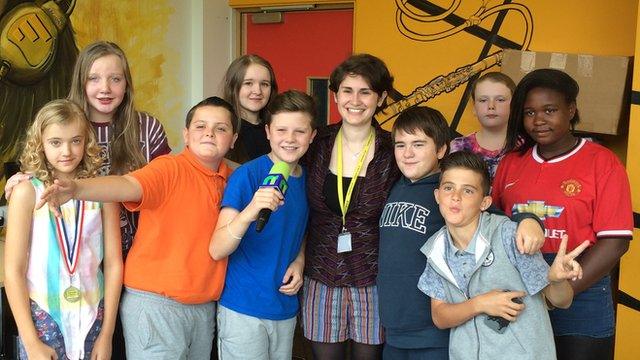What are the different types of schools?
- Published
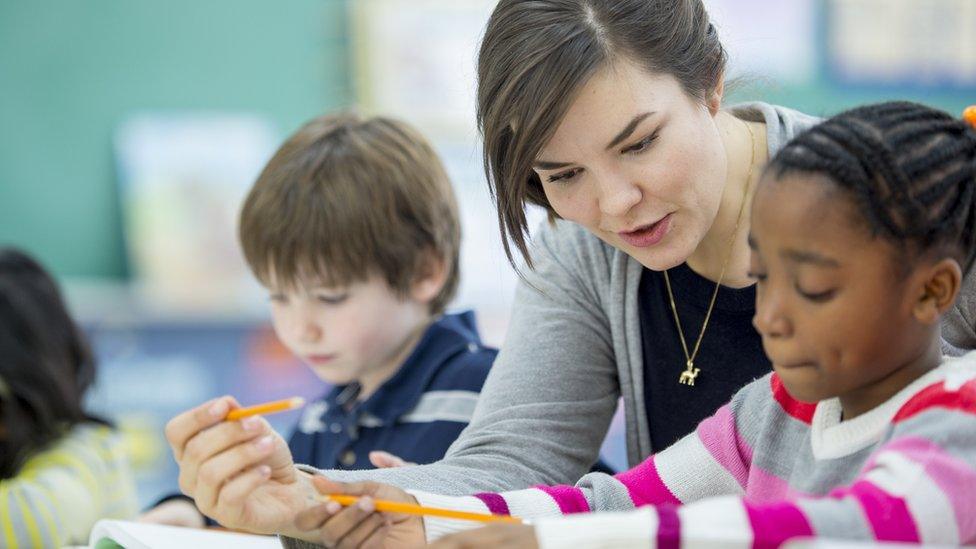
Children all over the country go to many different kinds of schools.
Since Theresa May became Prime Minister in July 2016, there has been a lot of talk about grammar schools in the news, because she wants to allow more of them to open. Other people think this is a bad idea.
Sometimes all of the different names of schools can be a bit confusing! So what do they mean?
Pre-school, primary and secondary
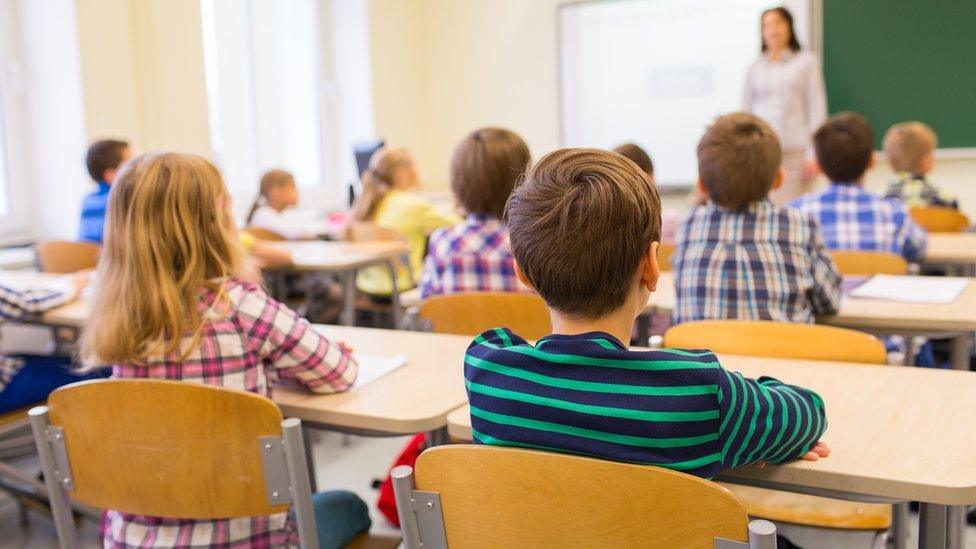
There are many different kinds of school in the UK - some have uniform, and some don't
Your time at school is divided into three chunks - pre-school, primary and secondary education.
Pre-school is when you first start spending days away from home as a toddler at nursery.
Your primary education is generally from the age of around 5 to 11. Secondary education is usually from the age of 11 to 16, although you may decide to stay in school until you are 18.
The way you are taught in schools is slightly different depending whether you live in England, Scotland, Wales or Northern Ireland. Other things like the dates of school holidays may also be different.
Types of school
There are two main types of school - ones that are paid for by the government and ones which aren't.
The ones which aren't, need to get the money to pay for themselves from somewhere else, like school fees.
The way schools are set up and run is "devolved": that means that rather than having the same rules as England, leaders in Scotland, Wales and Northern Ireland can decide their own rules for how their schools are run. That is why schools may be slightly different across the UK.
The national curriculum is what the government says that children should have to learn when they are at schools paid for by them
State school
This is a school which is paid for by the government, so your parents will not have to pay school fees. The majority of children go to this kind of school.
Generally, schools that are paid for by the government have to follow the national curriculum.
Comprehensive school
A comprehensive school is the name for a school which anyone can go to - regardless of how well they do in exams - and where everybody is taught together. They are usually run by the local education authority - a part of the local council in that area.
Faith school
These are schools which have a focused on a particular religion. They generally have to follow the national curriculum, but may have more freedom when it comes to what is taught about religion or over which children go to them.
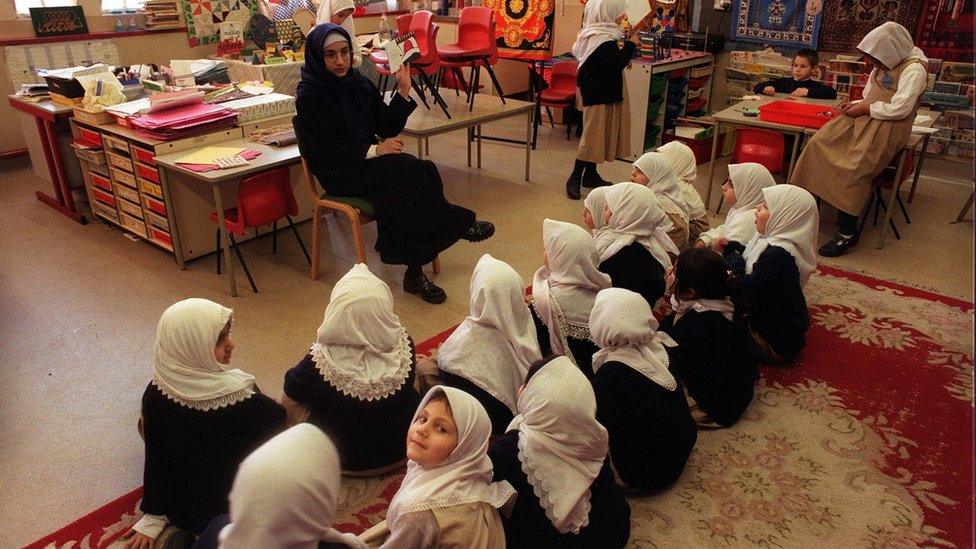
A teacher reads to her class at a Muslim faith school in London
Grammar school
Grammar schools are schools which children can go to from the age of 11, which the government pays for.
But they are different to comprehensives because they select their pupils using an exam known as the "11-plus", which kids sit at the age of 10 or 11.
The test often involves things like maths, verbal reasoning, comprehension and creative writing.
There used to be hundreds of grammar schools in England and Wales, but in the 1960s, the government said that everybody should be accepted into schools and taught in the same way - regardless of how well they could do in an exam.
As a result, the number of grammar schools went down.
There are now no state grammar schools in Wales and Scotland, but they still exist in parts of England and Northern Ireland.
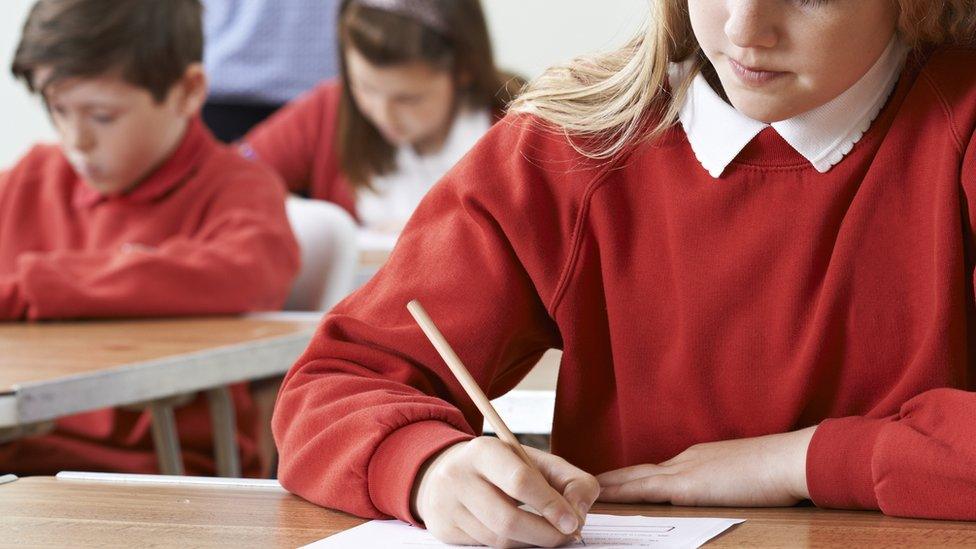
Kids have to sit a special type of exam, called the 11-plus, in order to get into a grammar school
Academies and free schools
These are types of school that are paid for by the government but are allowed more freedom over their own curriculum, timetables and the students they let in. Unlike comprehensives, for example, they get their money directly from the government, rather than by a local authority.
Independent school
These schools, also called private schools, have more say over how they run themselves, as they are not paid for by the government.
To go to one of these schools, your parents would have to pay school fees, which are used to pay to run the school.
If you go to an independent school, you may not study the same things as children at state schools, because the teachers can make more decisions about what they would like to teach.
Nursery
This is a type of pre-school, which you will tend to go to between the ages of around three and five. You might also hear it being called kindergarten.
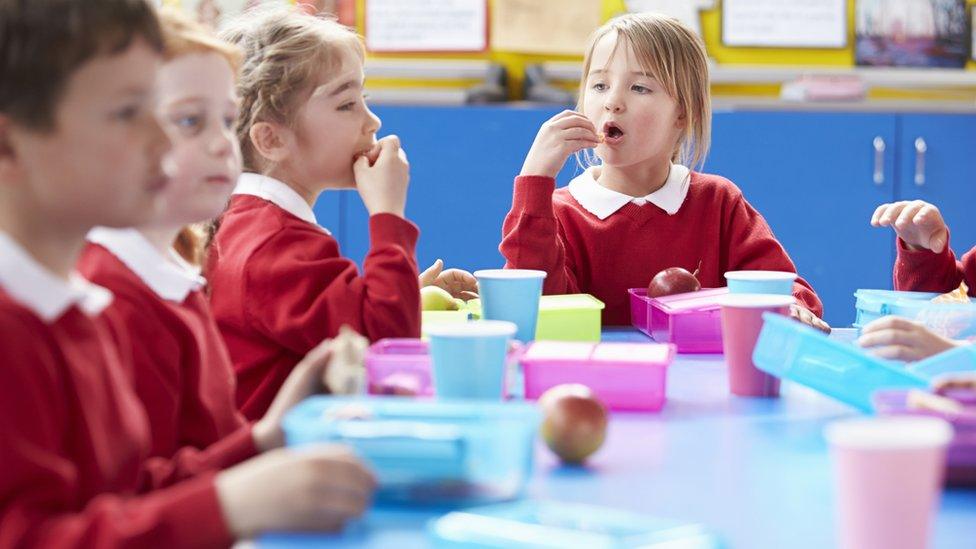
Primary school children eating their lunch
Primary school
This is the first school you went to at about the age of five. You stay there until you finish Year Six, when you are about 11.
You may be able to remember your first day at primary school!
Secondary school
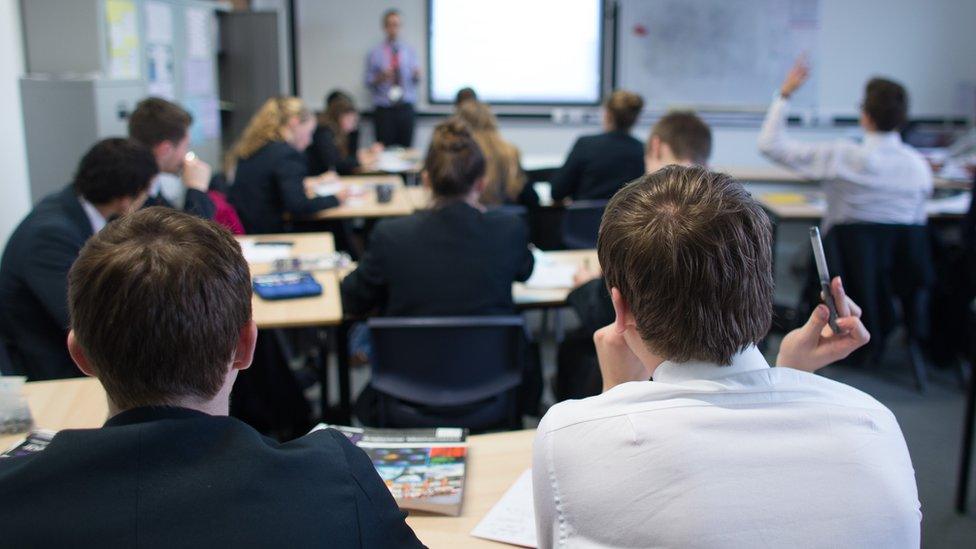
Secondary school pupils in a maths lessons
This is a school you go to after you finish primary school, usually at the age of 11.
School of Witchcraft and Wizardry
The most famous school of Witchcraft and Wizardry is of course Hogwarts. In order to go here, you will receive your letter by owl at the age of 11. If you are a muggle though, it might not be possible to go this kind of school.
...of course we're joking! This school doesn't exist, unfortunately!
- Published3 September 2015
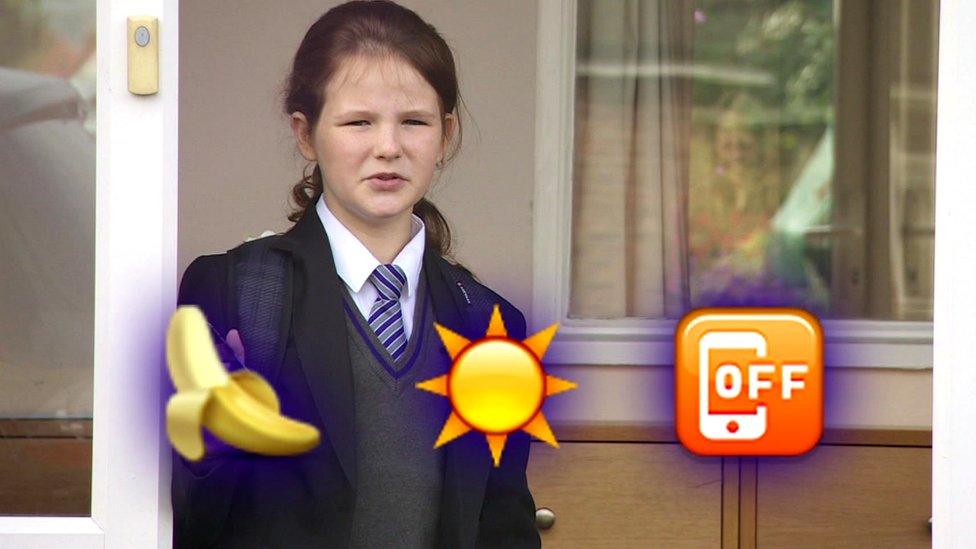
- Published25 September 2013
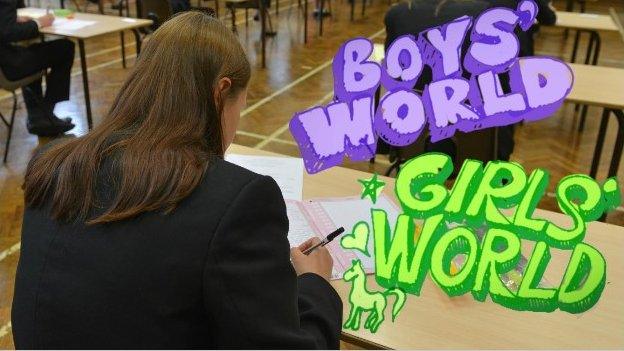
- Published2 September 2014
